[Most Recent Entries] [Calendar View] [Friends]
Below are 20 journal entries, after skipping by the 60 most recent ones recorded in
Boing Boing's LiveJournal:
| Tuesday, April 2nd, 2013 | |
| 5:21 am | Game of Thrones returns with critical mass of politicking Funny thing about recaps: Some of the early feedback I got on the handful I did last season suggested people wanted less blow-by-blow, more macroanalysis. But I wonder how well that works for Game of Thrones: Friends, I've read all the books and watched every season so far twice, and I'd be lying if I said I didn't reach for a wiki a few times to make sure I had everything and everyone straight as we begin the third season. I'm often afraid the show is going to shake less-obsessive Game of Thrones fans like a beauty in a bear pit, since we're reaching a critical mass of characters and politicking. Yet this is the season readers have anticipated most of all, and if the television adaptation has had one major strength so far it's its ability to abstract the muddy stuff and highlight over-arching themes. I'll be your guide this season, and I'll try to focus on some of those themes, while seeing what I can do to help everyone keep their names, faces and facts straight as we return to the world of Westeros and beyond after a long, long winter. I think the premiere deserves some extra details to make sure everyone knows exactly what's going on; if you just want some analysis, scroll to the end. The season three premiere picks up quite literally where we left off: With unlucky Night's Watchman Samwell Tarly struggling through the snow as the blue-eyed, undead Others -- and the legion of Wights they seem able to reanimate -- begin approaching the Wall from the mysterious, inhospitable lands beyond it. We've seen glimpses of this unknowable dread before in the series, but here's the point where we realize a legion of undead is going to be an issue for Westeros. An under-funded Night's Watch staffed mostly by ex-convicts and aging retirees is going to have a hard time holding these guys back -- and a harder time convincing anyone in the Seven Kingdoms to help out, given that their attention and their funds are tied up in their own wars for the throne. We presume it'll be harder without Jon Snow, who's been dispatched to infiltrate the society of the Free Folk, who live beyond the wall so they can avoid the oppression and war that comes with living under a traditional king. In this episode, we meet Mance Rayder, leader of the free folk and former crow of the Night's Watch himself. Mance is unimpressed when Jon awkwardly parrots rhetoric about freedom, but appreciates his more-truthful story about how the Watch's Lord Commander, Jeor "Old Bear" Mormont, ignored the sacrifice of male infants at Craster's Keep last season. Mance also probably appreciates the genuine romantic sparks he senses between Snow (who is adorably lateblooming about women) and Ygritte, the firehaired freewoman who's been his biggest advocate here. Back at King's Landing, we join Tyrion, who's recovered from his war wound -- less so from the complete untangling his sister Cersei's done of his attempts to restore some degree of power and balance in Joffrey's mad kingdom. We find him examining a mirror and noticing his scar makes him even uglier than he once was -- a hallmark of this series is taking people in bad situations and making them worse. Not that Peter Dinklage is actually ugly, mind. In the books, Tyrion actually loses part of his nose; the more restrained scarring he sustains here shows a healthy appreciation for his charismatic face. He will probably always be the best thing on this show, and HBO's April Fool's prank about him being replaced was momentarily sick-making, even knowing what day today is. Lannister patriarch Tywin has come to town, after arriving at the last minute to save the city from certain ruin. Tywin brought me my favorite moment of last season: Cersei, about to take her son's life as she trembles with wine and brutal terror, leaping to her feet with all the delight and relief of a young girl when it's her father, not the invaders, who strides into the throne room to reveal he's saved her. There's an incredible dichotomy in Tywin Lannister, who as a character is getting one of the best and most luminous treatments of anyone on the show -- he's ruthless, yet we can admire him; we see why his children both hate and long for him. His scenes with Arya Stark (posing as his cupbearer) last season were some of the show's best. Not that Tyrion can expect any similar sense of salvation from his father, who never conceals his open loathing for the son he views as twisted and deformed, and whom he will forever blame for the death of his wife in childbirth. Tywin is an excellent general but no kind of parent, and his attitude to strategy and efficiency strains and overhangs his dysfunctional, love-starved children. Cersei's heard Tyrion requested a meeting with their dad, and comes to find out what he wants. "He's my father," Tyrion replies."Do I need to want something?" That's some elegant dark humor, there -- but there's also the leaden ache when we hear Tyrion describe to his sister how he lay with his face split in half, yet no visit from his only parent. Tyrion may have had all his power taken away, but Cersei fears him anyway: She says she's afraid he'll tell lies, but it's plain it's the truth she's afraid of her father knowing: The nightmarish way she's let her son Joffrey trample the kingdom and run the family into the corner. Oh, yeah, and the whole bit where Cersei's kids are her brother's kids. That's kind of the big one. All Tyrion wants, it seems, is stewardship of the family home back in Casterly Rock (his brother Jaime, having joined the Kingsguard, forfeits the right to hold lands). But even though Tyrion was the only Lannister kid to show any bravery during the fight at King's Landing, Tywin's venomous at the suggestion: In his eyes, his youngest son is the only thing he's ever done imperfectly. Note dad's extreme offense at Tyrion's whoring; Tywin's own father apparently shamed the family by taking in a courtesan who indulged herself in the family's riches, and he can't abide the idea that his own son has brought a whore to King's Landing. Recall Tyrion confiding in Bronn and Shae about the nasty business his father put him through when he briefly married a whore as a youth. We see quite plainly how Tyrion came to be how he is: The cleverest of the children raised in the cunning Lannister mode, yet the least-loved. His closest ally right now is "upjumped cutthroat" Bronn, who's just asked for a pay raise for his "friendship." Davos Seaworth has survived the wreckage of Stannis Baratheon's fleet during the Blackwater battle by clinging to a rock in the middle of the sea. When rescuers arrive, they demand to know what king he's served. The wrong answer, here, could have ended his life, and you see on his face how dearly he knows this. Yet Seaworth would die loyal, declaring himself for Stannis, the "one true king." Seaworth is arguably one of the most moral and loyal characters in the entire narrative, yet Stannis is clearly twisted 'round the finger of the Red Woman, the sorceress Melisandre, and her fanatical worship of the Lord of Light. The pirate Sallador Saan, who contributed 30 ships to Stannis' war effort, believes Stannis' cause is lost and is bailing on Stannis, his ominous sorceress and her apparent penchant for burning nonbelievers. Yet after everything Davos has sacrificed, Stannis, himself an obsessive, fanatical purist whose own late brother Renly told him no one wanted for king, sends his most loyal man to the dungeons for speaking agains the sorceress. We see how manipulative the priestess is when she implies she could have prevented deaths, including that of Davos' own son, if only Davos had not convinced Stannis to leave Melisandre behind during the Blackwater battle. As for the Starks, they lost their Winterfell home primarily due to former ally Theon Greyjoy's prideful muddling, but it's clear Robb Stark's army blames the Lannisters, ignoring some of the subtleties of war in favor of a simplified -- and deeply personal -- vendetta against the family they hold responsible for the death of Robb's father Ned. In Robb's mind, the conflict is even more dangerously oversimplified: His main enemy is Jaime Lannister, and therefore the fall of Winterfell (and the slaughter of Northmen they discover here at Harrenhal) is the fault of his own mother, who set Jaime "free" (into the custody of Brienne of Tarth to be brought home, really) in a desperate exchange for her daughters. Ros, the prostitute who ended up as Peter "Littlefinger" Baelish's business partner, tries to bond with Shae over having come up in the world; Shae, still successfully posing as Sansa's handmaid, evades the idea that they may have shared experience.The woman never says anything about herself, and wholly rejects Sansa's attempt to play imagination games with her. Littlefinger's attention to Sansa is slightly creepy, given the degree to which we know that he once desired her mother (and the degree to which we know he can't be trusted), but Sansa's finally brave enough to tell him to help her leave King's Landing. The charismatic Tyrells have now joined the Lannisters via beautiful Margaery's wedding to Joffrey. But unlike the cowardly, squeamish and violent boy-king, she has no problem entering the poverty-stricken Flea Bottom to give gifts and food to the children -- and her willing vulnerability is an incredible foil to steely Cersei. The look on Cersei's face when Joff, who himself seems as interested in pleasing Margaery as anyone, suggests his mother is getting older is priceless. Of course, no one in this show is simple, and viewing Margaery as simply a naively-charitable heroine would be a mistake. When she urges the head of the orphanage she visits to come to her if they need anything, her emphasis of "directly to me" could be viewed as a potential allusion to her motives. It'll be interesting, actually, to see how the show treats Margaery's objectives, since the books keep them obscured, and never let us get to know her well. Finally, we rejoin Daenerys, who has reclaimed her dragons and escaped the incredibly inhospitable Qarth with a ship and the riches she's won from her enemies. Next, she needs an army, so she her right-hand man, Jorah Mormont, are headed to Astapor to check out some slave soldiers for sale. We see how the silver queen aches for her Dothraki, who are suffering sickness and terror for her, having never been on the "poison water" in the history of their tribes. We see how firmly the idea of slavery at all disgusts her; she'll be able to get a terrifying army bred from childhood for war, but given that each of them has to murder a baby in their training to ensure they have no "weakness," will she compromise? Does she have a choice? Amid all the conniving and mistake-making of the Westerosi throne contenders, Daenerys' white-haloed morality is supposed to make us want her most of all for the throne. I wonder how people of extreme moral character manage to fare in this series? For some analysis, I want to talk about Daenerys, because her story arc is obviously going to be the most challenging for the show's writers in the season ahead. Early in the story, hers is one of the most interesting narratives: She begins a terrified girl, estranged from her royal background and at the mercy of her vicious brother Viserys. She's managed to dodge the Targaryen family madness; he hasn't. While he makes a desperate, irrational bid for power, she simply dreams of having her own home. When she's sold as an adolescent bride to a terrifying, wild horselord, we feel for her, and when she falls in love and learns to claim some power within a society completely foreign to her, we root for her. By the time Khal Drogo dies and Dany takes leadership of the Khalasar, we believe she can be a contender for the Iron Throne in her own right. But in the books, she often feels like an off-note from the time she comes into power onward: it's hard to forget she is written in lavish physical detail by a nerdy old guy who likes describing her breasts or her various states of arousal. There is a certain theft of dignity that happens to Daenerys that doesn't happen to Cersei, Arya, Sansa or Catelyn; Daenerys is a very young woman learning to become a moral authority, and this episode presents the way her desire to right impossibly large and deeply-ingrained wrongs such as global poverty or slavery in cultures that have a certain peace with slavery will conflict with her ultimate goal of queendom. Emilia Clarke as Daenerys often wears an expression simultaneously noble and soft, the kind you expect to see etched on a royal seal, and the way the camera lavishes on her -- a small, beautiful but insistent figure surrounded always by eerie predators -- is currently maintaing a delicate balance between the ways we're meant to see her as simultaneously righteous and powerless. Readers who are Dany fans seem to often feel like they don't know what the books will do with her; it's interesting to see what the show will do with her (I've read that Clarke begged George R.R. Martin to know; if I were her, I'd be the member of the cast begging the hardest, too). As the premiere closes, we see longtime Kingsguard commander Ser Barristan Selmy save Daenerys from a trap that exploited her own faith in people (believing a child offering her a ball was simply that, and not a warlock offering her a scorpion). Recall how Selmy was dismissed by Joffrey for being too aged? Now, Dany has a new champion -- and look how anxious this seems to make Mormont. Loyalty is really the overarching theme of this episode; its title, Valar Dohaeris, is High Valyrian for "all men must serve" (versus the title of the Season 2 finale, Valar Morghulis, or "all men must die"). How important is allegiance, Jon Snow is wondering as he tries to prove himself to Mance, and what happens when you misplace your loyalty -- or in the case of Robb, or Tywin, or Cersei, or Davos, your blame? This season's set to be disaster porn -- book fans are especially excited about season 3 because they cannot wait to see terrible things happen to important characters. Saying so is hardly a spoiler; it's Game of Thrones! If you want to see empowering narratives, watch Girls... er, wait. I got nothin'. |
| 7:44 am | Dutch reality TV show offers one-way trip to Mars A television company in Holland is seeking volunteers for a one-way trip to Mars. The good news is that the sort of people who would volunteer to be on a reality TV show will be on a one-way trip to Mars. Mars One was founded in 2010 by 36-year-old engineer Bas Lansdorp, who told ABC News he has a road map and financing plan for the project, and that "the mission is perfectly feasible."
In order to raise the estimated $6 billion required to fund such an ambitious project, Lansdorp says that it hopes to capitalize on vast public interest in a manned mission to Mars by selling global broadcasting rights to the mission. Seems legit.
From the company website:
Mars One is a not-for-profit organization that will take humanity to Mars in 2023, to establish the foundation of a permanent settlement from which we will prosper, learn, and grow. Before the first crew lands, Mars One will have established a habitable, sustainable settlement designed to receive astronauts every two years. To accomplish this, Mars One has developed a precise, realistic plan based entirely upon existing technologies. It is both economically and logistically feasible, in motion through the integration of existing suppliers and experts in space exploration. We invite you to participate in this journey, by sharing our vision with your friends, by supporting our effort and, perhaps, by becoming the next Mars astronaut yourself.More: Reuters TV, ABC News, and here's the company website for "Mars One." |
| 5:38 am | Adafruit debuts "Circuit Playground" -- a kids' puppet show about electronics I've written before about Adafruit's "Circuit Playground," a kids' puppet show about electronics (with accompanying coloring book and plushies!). The first episode, "A is for Ampere," just went live and it's a smashing history and explanation of the ampere and the electron. Circuit Playground “A is for Ampere” – Episode 1 |
| 6:00 am | Brain Rot: Hip Hop Family Tree, Afrika Bambaataa Planet Rock Read the rest of the Hip Hop Family Tree comics! |
| Monday, April 1st, 2013 | |
| 5:10 pm | Volcano Dust -- bhut jolokia (ghost chili) powder
|
| 1:33 pm | Bloodshoot: fun thriller comic book written by Duane Swierczynski
Bloodshot is the code name of a man who has billions of self-repairing/self-replicating nanoscale robots inhabiting his body. Bloodshot is part of a secret government defense project. The nanobots coursing through his system give him enormous strength and the ability to survive being shot, stabbed, or bombed, because they detect and repair damage. All they ask in return is that their host eats plenty of protein to keep them fueled. (That means cattle that happen to be grazing in a field should be afraid when Bloodshot is near.) In issues one through four (which make up this anthology) Bloodshot struggles to figure out his true identity. That's because the government scientists who designed Bloodshot have implanted in his brain a bunch of different identities, each with fabricated memories of wife and children, which the scientists can switch on like a TV channel to persuade Bloodshot to participate on a mission. In these issues of the comic, Bloodshot's already bizarre life gets even stranger. For one thing, the nanobots in his body had become intelligent and are communicating with him in the form of gold-colored apparitions of his imaginary wife and kids. For another thing, the scientist who created Bloodshot has gone rogue and is trying to use Bloodshot against his former colleagues. With shades of Greg Bear's Blood Music and Philip K Dick's novels, I had a blast reading Bloodshot and I'm eager to read volume 2, which comes out in July. (I should also mention that the art, by Manuel Garcia and Arturo Lozzi is excellent.) |
| 12:27 pm | Project: Recycle old scientific equipment into new tools for public engagement When ocean scientist Andrew Thaler found an old, outdated water level gauge, he found a way to give it new life — turning it into a tool to measure public interest in sea level rise. Instead of tracking water, the Sea Leveler tracks how much people are talking about water on Twitter. |
| 12:53 pm | In which Charles Darwin gets trolled From Darwin's diary written aboard the HMS Beagle, an accounting of an epic April Fool's prank of 1832. Knowing what I know about 19th-century sailors, this seems like a good way to get beaten up. |
| 1:01 pm | Indoor/Outdoor Humidex Thermometer
Setting it up is a snap. First insert two AA batteries into the back of the monitor and two more into the remote outside sensor. Press the reset button on both and you should begin receiving data which is displayed on the monitor. Look for a suitable place to locate the sensor. A shady area is recommended for accurate readings. The maximum transmission range is 45 meters but that is in open spaces. Walls will cut down on the separation distance. A signal detector icon indicates how strong the connection is between the two devices. Using this will help you find the best place to put each of the two gadgets. The remote sensor is splash proof but it should not be exposed to heavy rain. I have put mine under the eaves of my garage. The monitor can be mounted on a wall or placed on any flat surface. This particular model is perfectly suited for cold Canadian weather. The remote temperature sensor is good for -50°C to 70°C (-58°F to 158°F). The main difference between this monitor and the competition is that this model provides decimal temperature readings, which is a rarity. A temperature of 16.6°C to 17.4°C would register as 17°C on most monitors. I appreciate this precision because I am sure I can tell the difference between these two readings. On the monitor there is a battery indicator icon, letting you know when the power is starting to go. The batteries should last about 12 months. Besides the indoor/outdoor temperatures, the monitor also displays the outside humidity and a “Humidex” index to indicate how comfortable/uncomfortable the temperature really is outside. -- Marcel Dufresne Thermor Bios Indoor/Outdoor Humidex Thermometer $32 |
| 1:02 pm | March community-building-and-tribal-unity/Madness At the Wall Street Journal, Eric Simmons writes about the psychology of March Madness, which is really the psychology of relationships and the deep emotional bonds underlying communities and tribes. When you cheer on the Wichita State Shockers in the Final Four, what you're really doing is introducing other people (and other groups) into your definition of self. |
| 1:06 pm | Dear Evolution, get bent Imaginary letters, in which giraffes, angora rabbits, and emperor penguins air their grievances against the forces of natural selection. |
| 12:06 pm | And all the vaginas are well above average At Double X Science, Jenny Morber has an excellent piece about the wide range of diversity seen in human lady parts. "Are you normal? Yes. Are you average? No. Most likely," she writes. What follows is a fascinating tour of human biology, from the different lengths and colors of labia to the wide range of shapes exhibited by the inside of the vaginal canal, itself. Even better, all of this can change over the course of an individual woman's life, rendering "average" even more meaningless. |
| 11:59 am | Great dad dies (also, he was a scientist) [Error: Irreparable invalid markup ('<a [...] lady-scientists">') in entry. Owner must fix manually. Raw contents below.] <p class='ljsyndicationlink'><a href='http://feedproxy.google.com/~r/boingboing/iBag/~3/-9N3nNIohuA/story01.htm'>http://feedproxy.google.com/~r/boingboing/iBag/~3/-9N3nNIohuA/story01.htm</a></p><p class='ljsyndicationlink'><a href='http://boingboing.net/?p=222495'>http://boingboing.net/?p=222495</a></p>Handsome Dad of the Year (a former brunette) took out the garbage without fail, did the family shopping, and is remembered fondly by his step-daughters/first-cousins-once-removed. <a href="http://www.lastwordonnothing.com/2013/04/01/guest-post-physicist-dies-made-great-chili/">Also, outside the home, he discovered something called "relativity"</a>. Jennie Dusheck has a great follow up to <a href="http://boingboing.net/2013/04/01/rocket-scientist-who-also-made.html" title="Rocket scientist who also made "a mean beef stroganoff" inspires debate on how to write about lady-scientists">a story that Xeni posted about earlier today.</a> <img width='1' height='1' src='http://rss.feedsportal.com/c/35208/f/653965/s/2a37d07c/mf.gif' border='0'/><div class='mf-viral'><table border='0'><tr><td valign='middle'><a href="http://share.feedsportal.com/viral/sendEmail.cfm?lang=en&title=Great+dad+dies+%28also%2C+he+was+a+scientist%29&link=http%3A%2F%2Fboingboing.net%2F2013%2F04%2F01%2F222495.html" target="_blank"><img src="http://res3.feedsportal.com/images/emailthis2.gif" border="0" /></a></td><td valign='middle'><a href="http://res.feedsportal.com/viral/bookmark.cfm?title=Great+dad+dies+%28also%2C+he+was+a+scientist%29&link=http%3A%2F%2Fboingboing.net%2F2013%2F04%2F01%2F222495.html" target="_blank"><img src="http://res3.feedsportal.com/images/bookmark.gif" border="0" /></a></td></tr></table></div><img src="http://feeds.feedburner.com/~r/boingboing/iBag/~4/-9N3nNIohuA" height="1" width="1"/> |
| 11:36 am | Unicorn farts: the smell of April Fool's day
|
| 11:53 am | Cartoonist Ed Piskor interviewed Here's our own cartoonist Ed Piskor being interviewed at Columbus Museum of Art by Jared Gardner on March 24, 2013. It's great to hear him talk about his influences and interests in this hour long conversation.
|
| 8:44 am | Three's Company pilot with different actors The rather dreadful 1970s sitcom Three's Company adapted the UK sitcom Man About the House for American TV; it ran for eight seasons and was heavily syndicated through my whole childhood, and as with many people of my age, it lurks in my subconscious. It turns out there was an unaired pilot that used some of the same cast, but a different writing team and a somewhat smarter brand of comedy, and it's surfaced on YouTube. Here's Wikipedia's description of that pilot:
Three's Company - Rare First UNAIRED Pilot (Part 1) Three's Company - Rare Second UNAIRED Pilot (Part 2) (via Super Punch) |
| 7:00 am | Dinner’s Revenge: mealworms that survive in the stomach, then eat their way out of predators Photo: Gilles San Martin (cc) Can the eaten eat back? The darkling beetle, small and shy with an understated matte-black carapace, is better known as its adolescent self, the mealworm. Mealworms and their darkling cousins the superworms are popular “live feeders”—food for pet reptiles and amphibians that won’t eat prey that’s already dead. For years, a disconcerting rumor has bounced around the “herp” (as in, herpetofauna) community. Heed the words of Fishguy2727, posting on Aquaticcommunity.com: “I have talked to a number of people who have FIRST-HAND watched with their own eyes as the animal ate a mealworm ... and within ten to twenty seconds the mealworm is chewing out of the animal’s stomach.” I heard about the phenomenon SECOND-HAND from wildlife biologist Tom Pitchford. The mealworm came to mind when I asked Tom whether he knew of any nonparasitic creature that could survive in a stomach for any length of time. He had heard that some online herp forums recommend crushing mealworms’ heads prior to serving. “While the insect is in its death throes, the lizard will come over and eat it.” Mealworm ranchers scoff. “This is an old wives tale,” says Wormman.com. The owner of Bassetts Cricket (and mealworm) Ranch told me that a slice of carrot, for a mealworm, is a two-day project. “They can’t eat out,” he said. (Though obviously enough people worry about it that it has its own verb form.) But mealworm sellers have a financial stake in the matter. What do reptile and amphibian dealers say? Carlos Haslam, manager of the East Bay Vivarium, a reptile and amphibian store not far from my home, told me that in his forty years in the business, he has not seen the phenomenon nor heard a customer report it happening. He pointed out that lizards chew their food before swallowing. Frogs don’t, but lizards do. And most of the stories are about lizards. Fishguy2727 takes no comfort. “Just because 1,000 people have not had it happen to them does not mean it is impossible. There is no doubt that this can happen.” As so often is the case with apocryphal tales like this, finding someone who knows someone who’s seen it is easy. Less easy is tracking down an actual eyewitness. One who claims to have seen is John Gray, the animal care technician at the Tracy Laboratory at the University of Nevada, Reno. His boss, Richard Tracy, is a physiological ecologist. He predicts hotspots of future extinction, with reptiles and amphibians as his focus. Eighteen lizards, forty toads, and fifty frogs are under John Gray’s care, but he has not seen it happen to any of them. It happened to a fence lizard he caught in his backyard as a twelve-year-old. He recalls feeding a superworm to his new pet in the evening, and finding the lizard dead the next morning with the superworm “hanging out of its side.” Tracy is skeptical. He has a theory that the story took root in the public’s consciousness with the 1979 release of Alien, a film in which the title character hatches inside one of the crew and breaks through the skin of the man’s abdomen during a meeting. He questions Gray’s memory. Who can recall, with dependable accuracy, the details of an event that happened thirty years ago? One of the mealworm’s natural behaviors is to crawl underneath things. “Mealworms prefer darkness and to have their body in contact with an object,” says the University of Arizona Darkling Beetle/Mealworm Information sheet, under the heading “Interesting Behaviors.” The sheet’s authors make no mention of mealworms eating their way out of stomachs, which would, you’d think, qualify as interesting behavior. As with the post-laxative stomach slug and snake sightings of yesteryear, it seems more likely that the worm was already on the scene, seeking darkness and framed by happenstance. However, like most people who work with captive reptiles and amphibians, Tracy has trouble completely dismissing the stories. He’s going to do what experimental biologists do in situations like this: experiment. Professor Tracy has borrowed an endoscope. It is slimmer than most because it was designed to look up urethras. The scope belonged to a urologist whose daughter studied tortoises at the University of Nevada. He lent it to her to look inside tortoise burrows, and she has lent it to Tracy to watch mealworms inside stomachs. What goes around comes around, and up and in and through. Tracy has no funding for the experiment, just enthusiasm. He calls up colleagues and acquaintances and tells them what he’s fixing to do, and they jump on board with offers to help. Walt Mandeville, the university veterinarian, has volunteered to do the sedating. Tracy’s grad student Lee Lemenager will be manning the endoscope. Lee has the kind of face that children draw when they first begin to draw faces, everything round and benign. Earlier in the day when he dripped gastric acid on a superworm, it seemed like a friendly thing to do. “And this is Frank and Terry, from OMED,” says Tracy as two more men show up in the lab. OMED of Nevada sells used medical equipment. “They lent us tens of thousands of dollars of video equipment that is forty years old and probably worthless. Welcome!” Tracy is one of those supremely likable professors whom students keep in touch with long after graduation. The back wall of the Tracy Laboratory is covered with photographic portraits he has taken of his grad students. His white hair suggests he may be closing in on retirement, but it is difficult to imagine him golfing or watching daytime television. Tracy holds a bullfrog in sitting position while Lee feeds the scope into its mouth and down to the stomach. We aim to spy on a superworm swallowed less than two minutes ago. The endoscope, which is a flexible tube of fiber optics with a tiny camera and light at the end, is hooked up to a closed-circuit video monitor so that everyone can watch, and Tracy can film, what’s happening inside the stomach. The frog is sedated but awake. It glows like a decorative table lamp, the kind that sets a mood but is not sufficient to read by. The screen on the monitor is solid pink: the view from inside a well-lit frog stomach. You don’t expect any part of a frog to be pink, but there it is, pink as Pepto-Bismol. And then suddenly: brown. “There he is!” Lee focuses down on telltale bands of brown, tan, and black. The superworm is not moving. To see whether it’s even alive, Walt the veterinarian inserts a pair of biopsy forceps through the makeshift speculum that Lee slid down the frog’s esophagus at the beginning of the experiment. The jaws of the forceps gently squeeze the superworm’s midsection. It squirms, electing a spontaneous Broadway chorus: “It’s alive!” “Is it chewing?” someone asks. As if by director’s cue, all heads lean in. “That’s the tail,” says Walt the vet. Walt has a keen observational eye, honed by a span of years as a poultry inspector (“4.8 seconds per bird”). Lee pulls back on the endoscope and works it over to the other end. The superworm’s mouthparts are still. Nothing is moving. Walt tells us about a phenomenon he calls the “blanket effect.” To calm a wild horse prior to treating it, a vet may herd the animal into a narrow chute lined with packing peanuts that gently presses in on its sides. It is the same principle behind swaddling an infant or hugging a distraught friend or dressing a thunder-phobic dog in an elasticized Thundershirt, available in pink, navy, and heather gray. Mercifully, stomach walls seem to act as a mealworm Thundershirt. Before the superworm was presented to the frog, Lee looped a thread around its middle and secured it with surgical glue, so he could retrieve it later. Now that time has come. The frog surrenders its lunch seemingly without concern, and the superworm is left in a petri dish to recover. John Gray goes to get a chuckwalla, placing the superworm back behind the lizard’s teeth. Same result. The superworm quickly goes still but does not die. One thing is clear from these experiments. Mealworms are not much troubled by gastric—that is, hydrochloric—acid. Many people, including myself when I began this book, think of hydrochloric acid more or less the way they think of sulfuric acid, the acid of batteries and drain cleaners and hateful men who wish to scar women’s faces. Sulfur likes to bind with proteins, radically altering their structure. If that structure is your skin, you come away from the experience disastrously altered. Hydrochloric acid isn’t as caustic. For me the confusion can be traced to the movie Anaconda, the scene in which the giant snake rises from the water to regurgitate Jon Voight’s character, his face melted like wax. Some time back, I visited the lab of my favorite snake digestion expert Stephen Secor, the technical consultant on Anaconda. I told him I wanted to experience gastric acid, to get a sense of what it might feel like to be alive inside a stomach. He made me promise not to tell his wife, who oversees safety protocol for the university’s labs, and then he took a bottle of hydrochloric acid off a shelf and put a dab—five microliters—on my wrist. I braced for sharp heat, as from a drop of scalding water. It was a full minute before I felt anything at all, and then only a weak itch. He added another drop. At three minutes, the itch turned to mild irritation, which held more or less steady for twenty minutes, then faded to nothing. It left no mark. But stomachs secrete more than a single drop of hydrochloric acid. And they keep on secreting, readjusting the pH as the digesting food buffers the acid. My guess is that the situation inside an actively secreting stomach lies somewhere between what occurred on my wrist and what happened to the Japanese factory worker who fell into a tank of hydrochloric acid seven feet deep. The case report states that his skin turned brown and the delicate tissue of his lungs and digestive organs underwent “dry coagulation necrosis.” Burning—whether from acid or from heat—denatures proteins. It changes their structure. It is denaturing that solidifies the boiling egg, that curdles milk, that distorts the burn victim’s skin. Inside a stomach, hydrochloric acid denatures edible proteins, making them easier for digestive enzymes to break down. The effects of gastric acid are insidious but far from instantaneous, especially if the eaten entity is, like a superworm, protected by an exoskeleton. Crabs vomited after three hours in the stomach of the Asian crab-eating snake Fordonia leucobalia have been known to stand up and run away. I have an eyewitness for this: University of Cincinnati biologist Bruce Jayne. Jayne had “gently massaged” the snakes’ bellies to get them to surrender what they’d eaten, so he could tally it for his research. Because you can’t just ask them. But without Bruce Jayne to massage the belly, without Lee Lemenager to pull the surgical thread, without God making the whale regurgitate, there would seem to be no way out. Parasites are the exception. “Parasites bore all over the place,” says Professor Tracy. Some are equipped with a boring tooth, like a drill bit installed on the top of the head. “That’s what they’ve evolved to do. But these are mealworms, for crying out loud.” Larvae burrow, but they don’t bore. “How the hell would they know to tunnel out?” Walt the vet agrees. He is off and running with a story about the giant kidney worm, a parasite that bores out the entire organ and then exits the body through the urethra. He jerks his elbow toward the endoscope. “You could watch it coming with that scope.” Tracy is going to give the superworms one last chance, the best possible chance, to see if they can chew their way to freedom. They will be put inside a dead stomach—one with no secretions and no muscle contractions. Where do you find a stomach on a Thursday afternoon in Reno? “Chinatown?” suggests someone. “Costco?” “Butcher Boys.” Tracy pulls his phone from a pocket. “Hello, I’m from the university”—the catchall preamble for unorthodox inquiries. “I’m wondering, is there any chance at all we could get a fish stomach from you?” Tracy waits while the man goes to ask someone and/or make twirling finger motions at his temple for the benefit of his coworkers. The lab falls quiet. The feeder crickets chirp in the next room. “No stomachs of anything? No. Okay.” John Gray lifts his head and says, in his quiet way, “I’ve got a dead leopard frog in the freezer.” Everyone takes a break while Gray goes to defrost his frog under a warm tap. Walt entertains us with talk of an alternative-medicine experiment going on at the medical school—healers practicing Reiki on mice. Tracy walks next door to get a toad to show me, a new species he discovered doing fieldwork in Argentina. He returns with it in a glass dish, cradled against his belly. He looks like a kid standing in the kitchen with his cereal bowl. It’s a nice toad, less warty than some. I tell him this, and he seems pleased. “You could be the first person to like this species.” Second, I’m pretty sure. “You could be the last too,” says Lee, more of a frog guy. Gray rejoins the group with the defrosted leopard frog, now pinned in a dissecting tray. Lee snips up the midline of the belly and peels back the flaps of skin as if they were stage curtains. Professor Tracy slides a superworm into the stomach. The 1925 essay “The Psychology of Animals Swallowed Alive” opens with the author sitting “in quiet contemplation digesting after dinner” and wondering whether animals that swallow their prey live1 are “worried by the acrobatic effects of victims trying to escape.” If this leopard frog were alive, if frogs have the neurological wherewithal to worry, then the answer must be yes, they sometimes worry. The mealworm, with obvious worries of its own, animates the frog stomach like a sock puppet, arcing and straightening and squirming in the snug pink sac for fifty-five seconds. Then it stops completely. “Blanket effect,” says someone. The superworm is extracted and set aside. Like the others, it is motionless but not dead. And as with all the earlier entrées, this one will wake up after half an hour or so outside the stomach and appear to be fully recovered. A second worm is left in place overnight, to rule out the possibility that superworms can shrug off the blanket effect and resume their efforts to escape. It is dead by morning. “There is no way in my mind that they can eat their way out of stomachs,” states Tracy. Walt is not as sure. He was impressed by the vigor of the superworm’s struggle. “What if there were a weak spot in the stomach?” Might it be possible to escape a stomach by rupturing it with an especially forceful squirm? That appears to be what was depicted in a photograph that went viral in 2005, of a dead python in a Florida swamp with the tail and hind legs of an alligator sticking out of its side. “That’s what everyone was saying: that the alligator kicked its way out,” Stephen Secor told me. Secor had been flown out to the scene by a National Geographic television production team, who had hired him as an on-camera expert for a one-hour special spawned by the chimerical remains. Secor knew before he arrived that the dinner-kicking-its-way-out scenario was extremely unlikely. Pythons kill their prey before eating it. 2 “And there’s no way stuff can move once it’s inside there.” There was in fact a weak spot. Secor pointed to a printout of the photograph I’d brought with me when I visited his lab in late 2010. Two-thirds of the way down the python’s exterior is a patch of black (dead) tissue—a poorly healed wound from some earlier incident. The rupture of this wound, Secor thinks, was caused by an alligator, let’s call him alligator B, who attacked the python while he was digesting alligator A. The python broke open at the poorly healed wound, and A popped out. So it wasn’t, at the end of the day, a case of dinner exacting revenge from within. Just another dog-eat-dog day in the Everglades. The other theory Stephen Secor debunked for the National Geographic program was that the alligator dinner was so enormous the python simply burst. “That,” he said, pointing to the meal in the famous photograph, “is nothing.” The python is built to accommodate prey many times wider and bulkier than itself. The esophagus is a thin, pink stretchable membrane, a biological bubble gum. Secor went over to his computer and pulled up a slide of a python engulfing the head, neck, and shoulders of an adult kangaroo. This was followed by a shot of a python with three-quarters of a gazelle “down in,” with only the hips and rear legs remaining al fresco. Pythons use their muscular coils to pull the prey apart, like taffy, so it’s narrower and easier to get down. And they don’t swallow in a single peristaltic wave of muscle contraction, as we do. They do what’s called a “ptergoid walk.” They inch their jaws along on the prey like marines on their bellies, moving forward by the elbows, left, right, left. The other reason Secor could dismiss the bursting-stomach theory is that he knows exactly how much pressure that would take. “We sealed off the cloaca of a dead python and inserted an air line down the esophagus.” Probably much like you at this moment, Secor was “sick of listening to people talk about pythons bursting.” I would give you the citation for his experiment, but Secor did not publish a paper. It was “just a fun thing.” He pointed to my printout of the python-alligator photo. “It was a lot more pressure than could be generated from this.” Biologists have a term for stretchy, accommodating digestive equipment: compliant. You’re planning on taking down an ibex? Yes. No problem. I can handle it. The compliant stomach is a physiological larder, a storage unit for the food that will sustain an animal over the days or weeks when prey are scarce or it’s off its game. It is the stomach of feast-or-famine. “The predator has a very compliant stomach,” says David Metz, a gastroenterologist with the Hospital of the University of Pennsylvania who has studied people who compete in eating contests. “Think of the lion after the big meal, with its huge, distended belly. They can lie in the sun for the next few days, letting it all slowly get digested.” When you occupy the top spot on the food chain, you are free to lounge around with little concern over someone larger and stronger jumping you and eating you. The lion falls prey only to humans, in the form of hunters—and the occasional Mesopotamian vivisectionist. In a 2006 issue of the Lebanese Medical Journal, Farid Haddad details the efforts of Ahmad ibn Aby al’Ash‘ath, a court physician in Iraq circa a.d. 950, to document the compliancy of a lion’s stomach. In his opening paragraph, Dr. Haddad notes that ’ash ‘ath means “disheveled.” It seems an unlikely name for a royal physician, but a brief spin through the man’s writings sheds some light: “When food enters the stomach . . . , its layers get stretched; I observed this in a live lion which I dissected in the presence of Prince Ghadanfar. . . . I proceeded to pour water in the lion’s mouth and continued to pour jug after jug in its throat; and we counted until the stomach filled up with about [5 gallons]. . . . I then cut open the stomach and let the water out; the stomach shrank and I could see the pylorus. God is my witness.” The agriculturally informed reader may be unimpressed by the five-gallon capacity of the lion’s tank. A cow’s rumen—the largest of its four stomach compartments—is the size of a thirty-gallon trash can. Why should this be, when all a ruminant needs to do to get dinner is lower its head and graze? When food carpets the land from hoof to horizon, famine isn’t a concern. So why the massive intake? The answer lies in the relatively low nutritional value of the ruminant diet. It is not merely the size of the cow’s rumen that resembles a garbage can, it is the contents. The first place I visited for this book was the University of California at Davis, where animal science professor Ed DePeters and his colleagues test organic waste by-products to see whether they might make good cattle feed. With the help of a fistulated cow, DePeters has tested the digestibility of almond hulls, pomegranate scrap, lemon pulp, tomato seeds, and cotton seed hulls. He is a modern-day William Beaumont, lowering mesh bags of experimental foods into the rumen, and then pulling them out by a string at intervals to see what remains. The day I visited, they had been testing prune pits from nearby Yuba City, “the prune capital of the world.”3 Cows, by virtue of the plentiful and varied bacteria in their rumen, are able to derive energy from things that would pass through a human undigested. The prune pit has a hard, nutritionally blank hull, but the embryo inside provides protein and fat. Rumen bacteria can break down the hull and free these nutrients, though it takes them a few days. DePeters showed me one of the mesh bags. “Sometimes I put a midterm exam in there,” he said. Cows can’t digest wood pulp. “I tell my students, ‘The cow didn’t digest that material any better than you did.’” “We’ve done cloth from a plant in Petaluma that was making cotton towels. All the small linters that didn’t get into the towels? You can feed ’em. They can break it down. They get energy from it. It’s just slower.” As with hay and grass, it takes a sizable serving of tea towel for a cow to get its RDA—hence the enormous volume of the rumen. DePeters speculates that there’s another reason for the huge capacity of the rumen. Ruminants graze on the open plain, easily visible and vulnerable to predators. “So they’ll go out and graze and take in a lot, then go and hide somewhere to ruminate and digest.” The rumen is a built-in to-go box. DePeters took me to visit one of the fistulated cows. Escorted by an entourage of large flies, we made our way through a grid of muddy corrals. I was in kitten heels and a skirt, a fact from which DePeters, in filth-encrusted rubber boots and worn T-shirt, derived lasting merriment. DePeters is tanned and tall, with a wiry build. His hair is the same reflective silver of the screeching aluminum gates. It works well with his eye color, the deep dusty blue of scrub-jay plumage. Cow 101.5 was getting a hose bath from one of DePeters’s students, Ariel. Ariel and her array of piercings posed a welcome challenge to the stereotype of the conservative male ag major. We stood by, watching and waving away flies. I like the look of cows: the art-directed hide, their hips under their skin, the meditative sideways metronomics of the jaw. The fistulated—or “holey,” as the students like to say—cow has been an ag-school standard for decades. My husband Ed recalls, as a child, hearing from his dad about the cow at Rutgers with “a window in its side.” The operation is simple. The bottom of a coffee can is traced with chalk on the cow, a topical anesthetic applied, and the circle cut from the hide, along with a matching opening in the rumen. The two holes are stitched together and the hole is outfitted with a plastic stopper. It is little more barbaric than the earlobe plugs of my local Peet’s barista or Ariel’s facial adornments. “The animal rights people come out here expecting a glass window with a sash and sill,” said DePeters. He handed me a protective plastic veterinary sleeve that extended to my shoulder and directed me to position myself to the side of the opening. When a fistulated cow coughs, if it has been eating, wet plant matter sometimes blows out of the hole. DePeters took some photographs of me with my right arm in 101.5. The cow appears unmoved. I look like I’ve seen God. I was in all the way to my armpit and still could not reach the bottom of the rumen. I could feel strong, steady squeezes and movements, almost more industrial than biological. I felt like I’d stuck my arm into a fermentation vat with an automated mixing paddle at the bottom, and I basically had. Ancient man was omnivorous—a scavenger as much as a predator. Often enough, his steak dinner was shared with millions of potentially harmful bacteria. Thus the human stomach, unlike the ruminant’s, concerns itself with disinfection more than holding capacity. But even scavenged meals were sporadic, and some degree of storage was needed. How compliant is the human stomach? That depends on what you use it for. Endnotes 1 Those of you who swallow oysters without chewing them may be curious as to the fate of your appetizers. Mollusk scientist Steve Geiger surmised that a cleanly shucked oyster could likely survive a matter of minutes inside the stomach. Oysters can “switch over to anaerobic” and get by without oxygen, but the temperature in a stomach is far too warm. I asked Geiger, who works for the Florida Fish and Wildlife Research Institute, about the oyster’s emotional state during its final moments inside a person. He replied that the oyster, from his understanding, is “pretty low on the scale.” While a scallop, by comparison, has eyes and a primitive neural network at its disposal, the adult oyster makes do with a few ganglia. And mercifully, it is likely to go into shock almost immediately because of the low pH of the stomach. Researchers who need to sedate crustaceans use seltzer water because of its low pH. Geiger imagined it would have a similar effect on bivalves. But you might like to chew them nonetheless, because they’re tastier that way. 2 How remains a matter of debate. I had heard that pythons suffocate prey by tightening on its exhale and preventing further inhales. Secor says no; prey passes out too quickly for that to be the explanation. “You’d still have oxygen circulating in the blood, like you’re holding your breath.” He thinks it’s more likely that the constriction shuts off blood flow, more like strangulation than suffocation. An experiment was planned at UCLA but nixed by the animal care committee. Secor would volunteer himself. “I think we’d all like to have a giant snake constrict us in a controlled situation and see what happens—could we still inhale?” It’s possible he’s a little nuts. But in a good way. 3 Excuse me, I mean the Dried Plum Capital of the World. The change was made official in 1988, as part of an effort to liberate the fruit from its reputation as a geriatric stool softener. Yuba City has Vancouver, Washington, to blame for that. The original Prune Capital of the World, Vancouver was the home of the Prunarians, a group of civic-minded prune boosters who, back in the 1920s, touted the laxative effects of dried plums. The Prunarians also sponsored an annual prune festival and parade. A 1919 photo reveals a distinct lack of festiveness and pruniness. Eight men in beige uniforms stand in a row across the width of a rain-soaked pavement. A ninth stands on his own just ahead of the row, similarly attired. Presumably he is their leader, though you expect a little foofaraw from an entity known as the Big Prune. Or the Big Dried Plum, as Yuba City would like you to call him. Mary Roach is the author of four previous books, including Stiff: The Curious Lives of Human Cadavers, and Packing for Mars: The Curious Science of Life in the Void. She lives in Oakland, California. Her Twitter feed: @mary_roach |
| 7:06 am | Unicorn Chaser 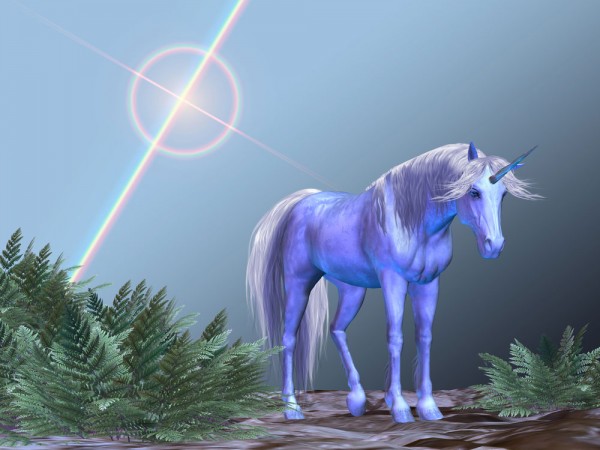 Image: "Unicorn Resting - A white unicorn rests under a bright star," by Catmando, for Shutterstock. |
| 7:14 am | How consumers let down their guard on web privacy There's a piece in the NYT by Somini Sengupta on how we are increasingly turning over our data online "in exchange for a deal we can’t refuse." The story profiles Alessandro Acquisti, a behavioral economist at Carnegie Mellon University in Pittsburgh, who studies how online users make these choices. "In a series of provocative experiments, he has shown that despite how much we say we value our privacy — and we do, again and again — we tend to act inconsistently." [NYT] |
| 7:17 am | Scientists not quite done ripping off Henrietta Lacks and family "History seems to have repeated itself. A group of scientists at the European Molecular Biology Laboratory in Heidelberg recently published a paper in which they sequenced the entire genome of a HeLa cell – essentially putting Henrietta Lacks's DNA sequence up on the internet for all to see. Amazingly, they failed to alert anyone in the Lacks family about their intentions or ask their permission." [Guardian] |
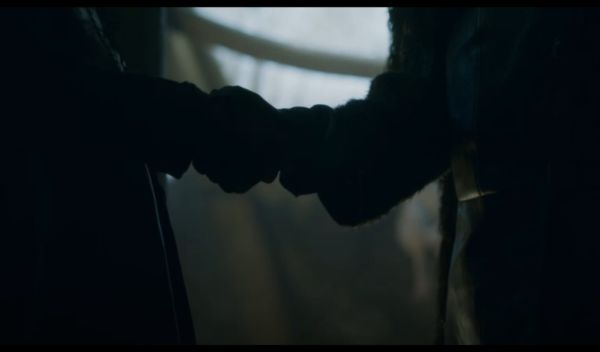
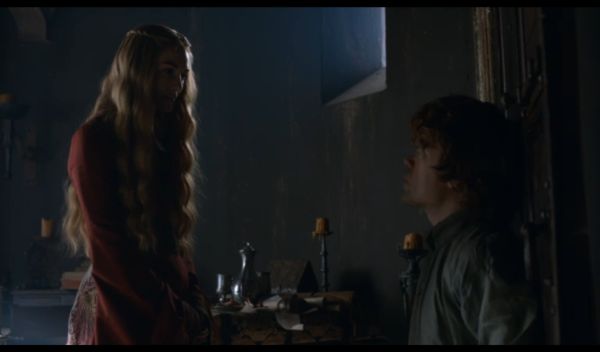

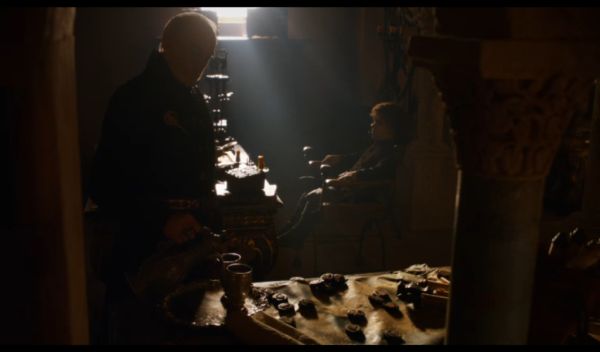
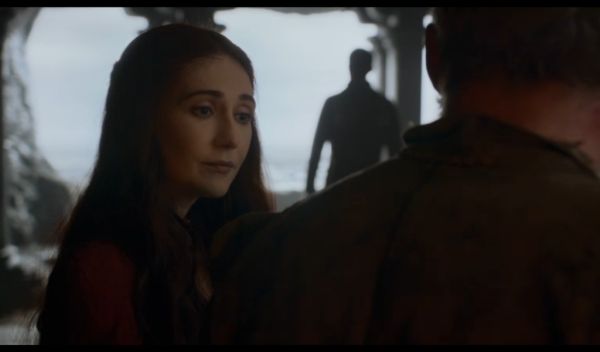





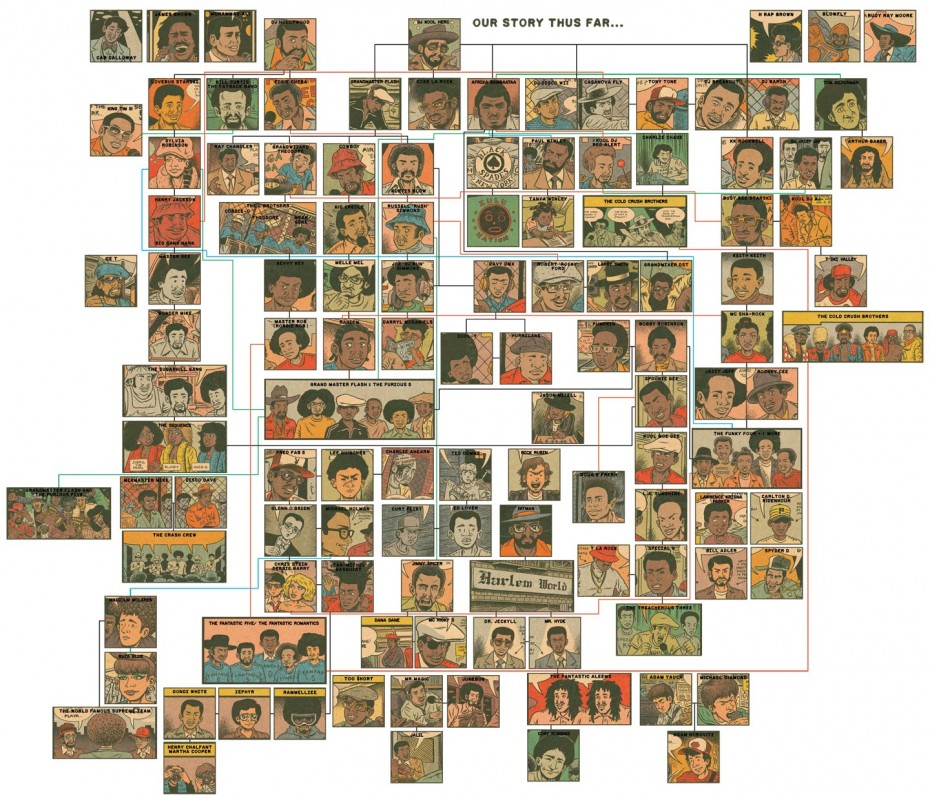







 Here at Toy Joy, April Fools Day smells like Unicorns! Specifically, Unicorn Farts! Not only is April 1 celebrated globally as a holiday of mischief, it also happens to be the best day for harvesting the rarest of poots: Unicorn Farts! Currently offered both in store at Toy Joy and at ToyJoy.com for the low price of $2.95, this enchanted product is sure to bring a smile to your prince or princess.
Here at Toy Joy, April Fools Day smells like Unicorns! Specifically, Unicorn Farts! Not only is April 1 celebrated globally as a holiday of mischief, it also happens to be the best day for harvesting the rarest of poots: Unicorn Farts! Currently offered both in store at Toy Joy and at ToyJoy.com for the low price of $2.95, this enchanted product is sure to bring a smile to your prince or princess. 
 Mary Roach's Gulp: Adventures on the Alimentary Canal is available from Amazon.
Mary Roach's Gulp: Adventures on the Alimentary Canal is available from Amazon.